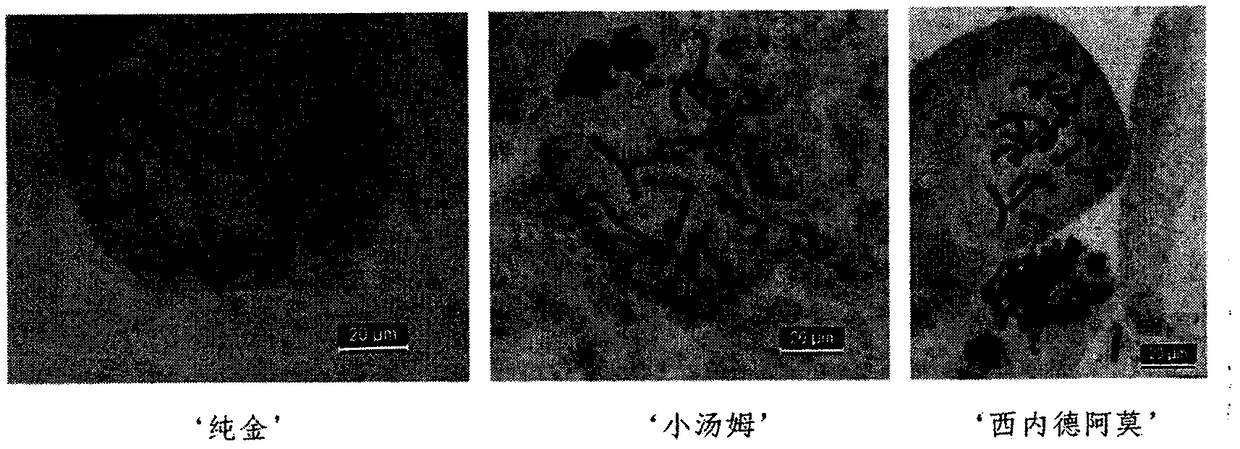Tulipa gesneriana L chromosome and karyotype studying technology
A technique of chromosomes and tulips, which is applied in the field of plant cytology and cytogenetics research, can solve the problems of karyotype research method steps without relatively specific explanations, and achieve the effect of clear dispersion effect
- Summary
- Abstract
- Description
- Claims
- Application Information
AI Technical Summary
Problems solved by technology
Method used
Image
Examples
Embodiment 1
[0020] Example 1 Tulip chromosome karyotype research method optimization
[0021] 1. Select 4 representative tulip varieties 'Golden Review', 'Leader', 'Prisma' and 'Purple Flag', and soak the bulbs of the selected varieties in clean water to obtain stem roots. When the root grows to about 1-3cm, in sunny morning (9:00-11:00) and afternoon (14:00-16:00), take the root tip of tulip bulbs of 4 varieties with equal length as experimental materials Ready to spare.
[0022] 2. Put the freshly removed root tip into 0.07 mmol / L cycloheximide for pretreatment, and then fix it with Carnot's fixative (glacial acetic acid:ethanol=1:3) at room temperature for 24 hours. After being taken out from the fixative, the roots were washed with distilled water. If they could not be pressed immediately, the root tips were placed in 70% ethanol and stored at 4°C.
[0023] 3. When making tablets, take out the stored materials, rinse them with distilled water for 3 times, absorb the water, put them ...
Embodiment 2
[0029] Example 2 Tulip Chromosome Karyotype Research
[0030] Applying the method of the present invention, the root tips of 43 varieties of tulips planted in the Beijing Botanical Garden were observed and studied on the chromosome karyotype, all of which achieved good results.
[0031] 1. Material selection: Select robust and complete bulbs without mechanical damage and disease and plant them in a moist substrate of peat: vermiculite: perlite = 1:1:1, and carry out rooting culture at room temperature. Observe once every other day, and when the root length grows to between 1.5cm-2.5cm, select the root tip with vigorous growth and division as the pretreatment material. Collect materials from 9:00 to 11:00 on sunny days.
[0032] 2. Pretreatment: When collecting materials, cut off the thick root tips with scissors, store them in a 2ml centrifuge tube, mark the variety number, and add an appropriate amount of 0.07mmol / L cycloheximide solution, and put it in an ice box for tempor...
PUM
 Login to View More
Login to View More Abstract
Description
Claims
Application Information
 Login to View More
Login to View More - R&D
- Intellectual Property
- Life Sciences
- Materials
- Tech Scout
- Unparalleled Data Quality
- Higher Quality Content
- 60% Fewer Hallucinations
Browse by: Latest US Patents, China's latest patents, Technical Efficacy Thesaurus, Application Domain, Technology Topic, Popular Technical Reports.
© 2025 PatSnap. All rights reserved.Legal|Privacy policy|Modern Slavery Act Transparency Statement|Sitemap|About US| Contact US: help@patsnap.com



